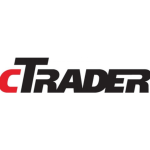
Platforms
Discover the Best Trading Platforms for Your Needs and Trading Success
67% of retail investor accounts lose money when trading CFDs with this provider.
Guide
What is a Trading Platform?
A trading platform is a software application that allows traders and investors to buy and sell financial instruments such as stocks, forex, cryptocurrencies, commodities, and more. These platforms act as intermediaries between the trader and the financial markets, providing the necessary tools to execute trades, monitor price movements, and analyze market trends.
Trading platforms typically offer a variety of features designed to enhance the trading experience, including:
- Real-Time Market Data: Accurate and up-to-date information on asset prices, market depth, and order flow.
- Charting and Analysis Tools: Visual charts and indicators to help traders analyze price trends, identify patterns, and make informed trading decisions.
- Order Execution: The ability to place, modify, and cancel orders quickly, often with different order types such as market orders, limit orders, and stop-loss orders.
- Automation: Many platforms allow for automated trading strategies through algorithms that can execute trades based on pre-set conditions.
- Risk Management: Tools that help traders manage risk by setting stop-loss orders, take-profit levels, and margin controls.
In essence, a trading platform is the trader’s command center, providing access to the financial markets and the tools needed to execute trades efficiently. Different platforms cater to various types of traders, from beginners who need user-friendly interfaces to professional traders who require advanced features like algorithmic trading and detailed technical analysis.
Why Choosing the Right Trading Platform Matters
Your trading platform is your most important tool when navigating the markets. The right platform can help you:
- Execute Trades Efficiently: With fast order execution and a variety of order types, a good platform ensures that you can enter and exit trades at the right moments.
- Perform Detailed Analysis: Whether you rely on technical analysis, fundamental analysis, or a combination of both, modern trading platforms provide powerful charting tools, news feeds, and real-time market data.
- Automate Trading: For those who prefer algorithmic trading or want to set specific conditions for trade execution, platforms like MT4, MT5, and cTrader offer advanced automation features.
- Manage Risk: Effective risk management tools such as stop losses, take profits, and risk-to-reward ratio calculations help traders protect their capital and make more informed decisions.
How to Choose the Best Trading Platform for Your Needs
There is no one-size-fits-all solution when it comes to trading platforms. The best platform for you depends on your trading style, experience level, and the markets you trade in. Here are some key factors to consider:
- Asset Classes: Do you trade forex, stocks, cryptocurrencies, or a combination of asset classes? Some platforms, like MT4, are primarily focused on forex, while others, such as MetaTrader 5 and TradingView, support multiple markets.
- Automation: If you rely on automated trading strategies, platforms like MetaTrader and cTrader allow you to set up and run algorithms, while others may have limited automation capabilities.
- Charting Tools: If in-depth technical analysis is part of your strategy, TradingView’s advanced charting features might be the best fit, whereas MT4 provides robust but slightly less modern tools.
- Execution Speed: For high-frequency traders, fast execution and real-time data are critical. Platforms like cTrader and TakeProfit.com are designed to meet the needs of those who require low-latency trading.
- Community and Learning: If you enjoy learning from other traders or sharing your own insights, platforms like TradingView offer social trading features that allow for idea sharing and collaboration.
How To Start Trading In 15 Minutes
Start Your Trading Journey with capital.com
Open a Real Money Account
Sign up with capital.com and start trading Platforms with as little as $100.
Open a Real AccountOR
Practice with a Demo Account
Not ready to trade with real money? Start practicing with capital.com’s demo account.
Open a Demo AccountCFDs are complex instruments and come with a high risk of losing money rapidly due to leverage. 67% of retail investor accounts lose money when trading CFDs with this provider. You should consider whether you understand how CFDs work and whether you can afford to take the high risk of losing your money.










